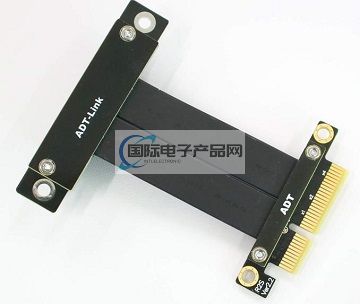Categorization:Product Information
PCI-E (Peripheral Component Interconnect Express) is a computer bus standard for connecting motherboards and various expansion cards, such as graphics cards, sound cards, network cards, etc. PCI-E cables refer to the cable wires used to transmit PCI-E signals. In terms of connection and design, PCI-E cable has some important characteristics and requirements. I. PCI-E cable connection: PCI-E cables have a variety of connection methods, including different versions of specifications and connection types. The following are some common PCI-E cable connection methods: PCI-E x1 interface: PCI-E x1 interface is one of the most common PCI-E interfaces used to connect various PCI-E expansion cards. It usually takes the form of a slot, and requires a PCI-E card to be inserted into the PCI-E x1 slot.The PCI-E x1 interface utilizes a single PCI-E differential signaling pair, and the connection transmits data through one differential pair.PCI-E x4, x8, and x16 interfaces: These interfaces are the high-speed versions of PCI-E, and are used to support higher-bandwidth-required devices, such as high-performance graphics cards. They use a corresponding number of differential pairs to transfer data, i.e., PCI-E x4 interfaces use 4 differential signaling pairs, PCI-E x8 interfaces use 8 differential signaling pairs, and PCI-E x16 interfaces use 16 differential signaling pairs.PCI-E M.2 Interface: PCI-E M.2 interfaces are a newer form of PCI-E interfaces commonly used for connecting devices such as solid state drives (SSDs) and devices such as wireless NICs. It is a miniaturized interface that uses an M.2 card slot for connectivity.The PCI-E M.2 interface typically supports multiple PCI-E differential signal pairs, the exact number depending on the specific specification and version. External PCI-E interfaces: In addition to the internal PCI-E interfaces, there are a number of PCI-E interfaces for external device connections. These interfaces are usually cable-connected and are used to connect external devices such as external graphics expansion boxes (eGPUs). These interfaces use special cables and connectors to ensure high-speed data transmission and good signal quality. Second, the design of PCI-E cable: When designing a PCI-E cable, the following aspects need to be considered: Signal Integrity: PCI-E cable design should consider signal integrity to ensure the reliability and stability of signal transmission. This includes factors such as proper impedance matching, suppression of signal interference and crosstalk, signal transmission delay and clock jitter. Differential Signal Pairs: PCI-E cables use differential signal pairs for data transmission, so the design needs to correctly match and wire differential signal pairs to minimize signal distortion and interference to a greater extent. Differential signal pairs should be routed in equal lengths as much as possible, and proper differential pair matching and layout techniques should be used. Impedance Control: PCI-E cables should have proper impedance matching to maintain signal transmission integrity. The design should use appropriate cables and wires and take steps to control the impedance of the line and ensure matching to devices and connectors. Electromagnetic Interference (EMI): PCI-E cable design requires consideration of electromagnetic interference. Through the use of appropriate shielding materials and techniques, as well as good line layout and grounding design, you can reduce the impact of electromagnetic interference on the signal and improve the system's anti-interference capabilities. Power supply: PCI-E cables may also transmit power supply lines to provide power to PCI-E devices. In the design, you need to consider the safety, stability and power supply capacity of the power supply line to meet the power requirements of the device. Physical Connection: The physical connection of PCI-E cables usually uses special connectors, such as PCI-E slots, M.2 slots, and so on. These connectors should have good mechanical strength and reliability to ensure the reliability of plugging and unplugging and the stability of the connection. In summary, the connection and design of PCI-E cables need to consider factors such as signal integrity, differential signal pairs, impedance control, electromagnetic interference, power supply and physical connection. Proper design and layout can ensure the reliability and performance of PCI-E cables, providing high-speed data transmission and stable connections.

-About International Electronic Products Network platform related to the introduction and sales of products brief: International Electronic Products Network - a professional agent / production / sales of a variety of {connectors | wiring harness | wire and cable products}; if you have a related [connectors | wiring harness | wire and cable products] procurement / purchasing needs or want to buy / to understand which connectors | wiring harness | wire and cable products we can provide solutions, please contact the following Division I business personnel; if you have a related [connectors | wiring harness | wire and cable products] sales / resources and promotion needs, please click "→ Business Cooperation ←" with the person to discuss! If you have related [connectors | wire harness | wire and cable products] sales / resources and promotion needs, please click on the "¡¡ Business Cooperation ←" to discuss with a person!